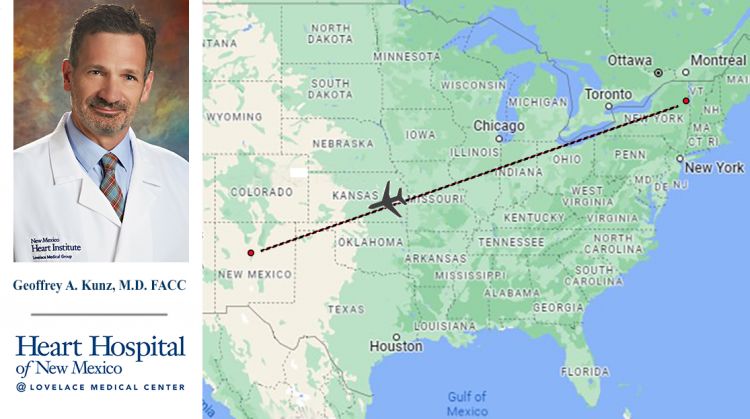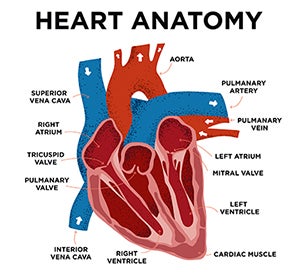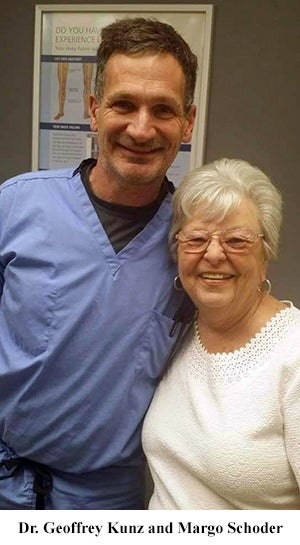
For Margo Schoder, 79, the level of care she receives from the Heart Hospital of New Mexico at Lovelace Medical Center is so valuable that she travels more than 2,000 miles for her annual checkups.
“The doctors, nurses and the entire staff at the Heart Hospital have made such an impact on my life,” Margo said. “They are the difference between me succumbing to one of my heart ailments and living our happy retirement years with my husband.”
Most of the year Margo and her husband live in the town of Hague, New York, nestled on the shores of Lake George, in the state’s Eastern Adirondack Mountains. But before they travel to Florida for the winter months, Margo flies to Albuquerque for her annual cardiac exam in November.
“We used to drive the entire distance, which gave us a chance to see the country and stay with our son in Taos,” Margo explained. “But now, it’s much easier to fly that distance and still have time to spend with family.”
Cardiac issues and procedures
Margo’s cardiac issues started around 10 years ago at age 69 when they were living in Amalia, New Mexico. At the time, she didn’t battle any chronic health issues.
“About a month before I had my first heart attack, I didn't feel well. One night I felt a stabbing pain in my back that lasted awhile but then it went away,” Margo explained. “My physician referred me to a cardiologist who wanted to do an angiogram, but we were leaving in two days to go on vacation in Minneapolis.”
On the night before they were scheduled to fly home, they stayed at the home of Margo’s niece, a nurse at a local hospital. “At 2 o’clock in the morning, I woke up with terrible jaw pain, diarrhea and vomiting. My niece called right away for an ambulance to take me to the hospital.”
Margo underwent a procedure to put a stent in a clogged artery. She stayed three extra days in Minnesota before flying home to New Mexico.
 Her doctor prescribed a rehabilitation program in Taos for three days a week. But when the facility closed, Margo walked on her treadmill at home and made long trips up and down her driveway. “It took a while, but once I was recuperated, I felt great, especially for my age,” she said.
Her doctor prescribed a rehabilitation program in Taos for three days a week. But when the facility closed, Margo walked on her treadmill at home and made long trips up and down her driveway. “It took a while, but once I was recuperated, I felt great, especially for my age,” she said.
Then in 2014, two years after the first heart attack, she had another one at home. “We had horses at our home and I had just gotten back inside after feeding them. An hour later I was pouring my coffee when I felt that familiar jaw pain. That’s when my husband decided to drive me right away to the hospital without waiting for the ambulance.”
Once at the Taos hospital, the decision was made to send her by ambulance to a Santa Fe hospital for an angiogram. With those results in hand, the doctors put her in another ambulance bound for Lovelace Medical Center in Albuquerque.
There Margo underwent open heart, quadruple bypass surgery to clear four arteries connected to her heart. “Dr. Leah Jane McKinnon, who no longer works at the Heart Hospital in New Mexico, was just awesome,” Margo said.
“I remember being in the prep room with my son and husband with me, but I was very anxious. I said to the nurse, ‘I need to see Dr. McKinnon.’ And even though she was getting ready for surgery, she came out, held my hand and said everything will be fine. All of a sudden, I didn’t feel stressed or anxious anymore. Her compassionate care, like the other doctors’ care, is the difference why this hospital is my favorite.”
During Margo’s annual visit in 2016, New Mexico Heart Institute/Lovelace Medical Group interventional cardiologist Dr. Geoffrey Kunz detected that Margo’s aortic valve was not fully opening during each heart rhythm. This condition, known as aortic valve stenosis, occurs when the valve thickens and calcifies. It reduces the blood flow from the heart to the body and can also cause chest pain, shortness of breath, fainting and fatigue.
Transcatheter aortic valve replacement (TAVR)
Dr. Kunz scheduled Margo for a transcatheter aortic valve replacement (TAVR) procedure in early December. TAVR is a minimally-invasive procedure to replace the thickened aortic valve that can't fully open.
Instead of having open heart surgery to replace the valve, TAVR is done using smaller incisions and a thin, flexible tube (catheter) to reach the heart. During the procedure, the catheter is inserted into an artery in the patient’s leg or chest and then guided to the heart using moving X-rays or echocardiogram pictures.
A replacement valve, inserted into the hollow catheter, is then placed inside the damaged valve and inflated to restore normal blood flow to the body.
Care was ‘the difference’
 “I’ll never forget that day,” recounted Margo. “As they were prepping me for the TAVR procedure, I saw Dr. Kunz standing at the door. ‘Why is he standing at the door? I thought. He should be getting ready for the procedure.’ But Dr. Kunz knew how nervous I would be, so he waited to personally wheel me into the operating room. I thought that was awesome. That’s the difference in care I see every time I am there. That’s why I come back every year for my annual heart exam.”
“I’ll never forget that day,” recounted Margo. “As they were prepping me for the TAVR procedure, I saw Dr. Kunz standing at the door. ‘Why is he standing at the door? I thought. He should be getting ready for the procedure.’ But Dr. Kunz knew how nervous I would be, so he waited to personally wheel me into the operating room. I thought that was awesome. That’s the difference in care I see every time I am there. That’s why I come back every year for my annual heart exam.”
As for rehabilitation and exercise, Margo and her husband continue to go to a senior program in Hague two days a week. When they are in Florida, they do a lot of walking on the beach, sometimes plodding through the deep, soft sand.
Margo’s checkup this past November in Albuquerque went very well. “Everything was good.” Even though she also sees a cardiologist in New York once a year in the spring, she considers the Heart Hospital as her hospital.
“It’s comforting to know that if I ever need another procedure or have some sort of trouble, I would hope that I'd be able to get back to the Heart Hospital of New Mexico,” Margo said.
“I wouldn’t want to go anywhere else.”
For more information or to schedule an appointment with one of our cardiologists today, visit our website or call us 505. 841.1000.



